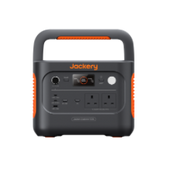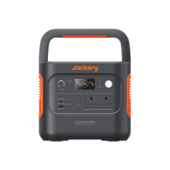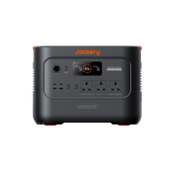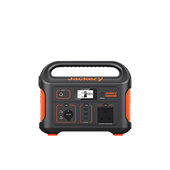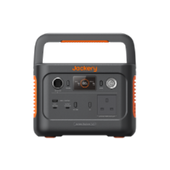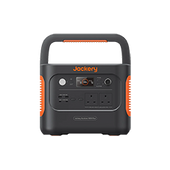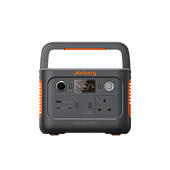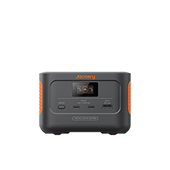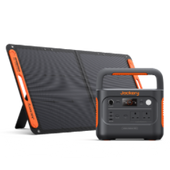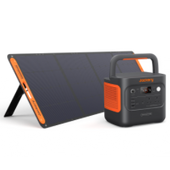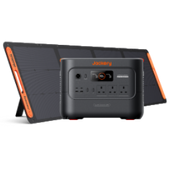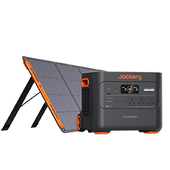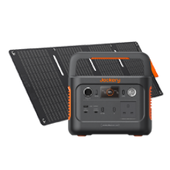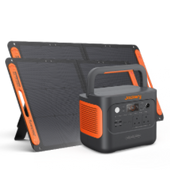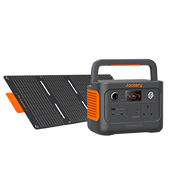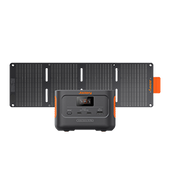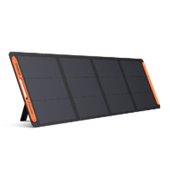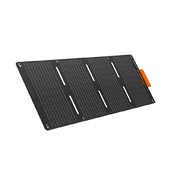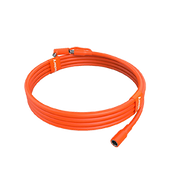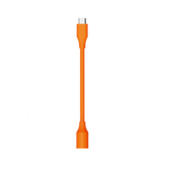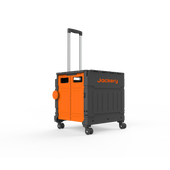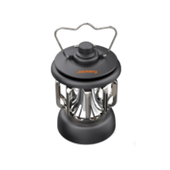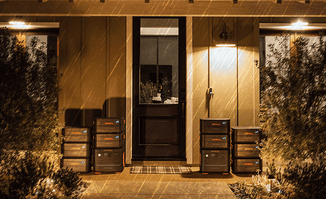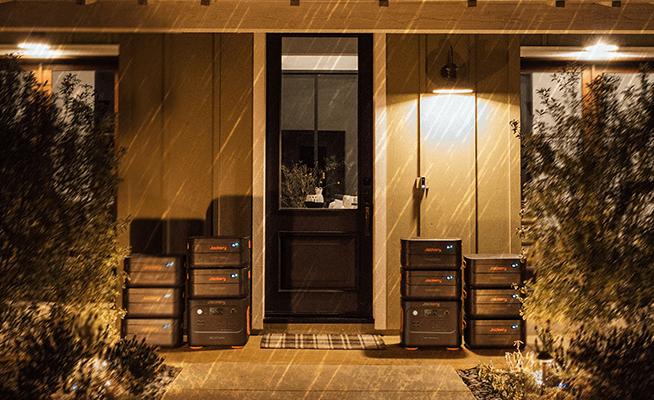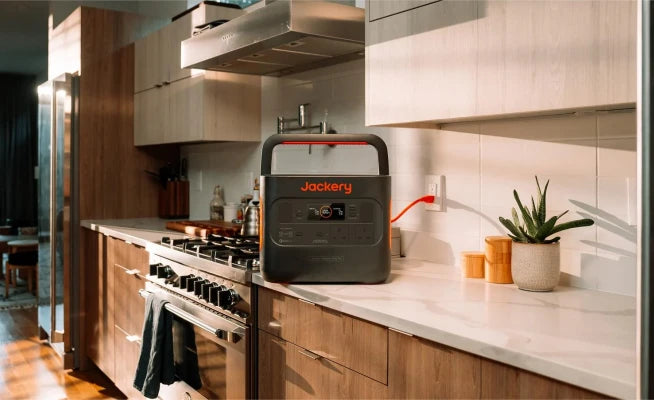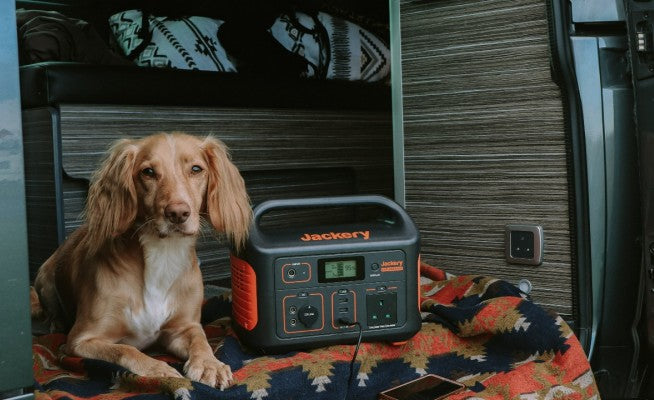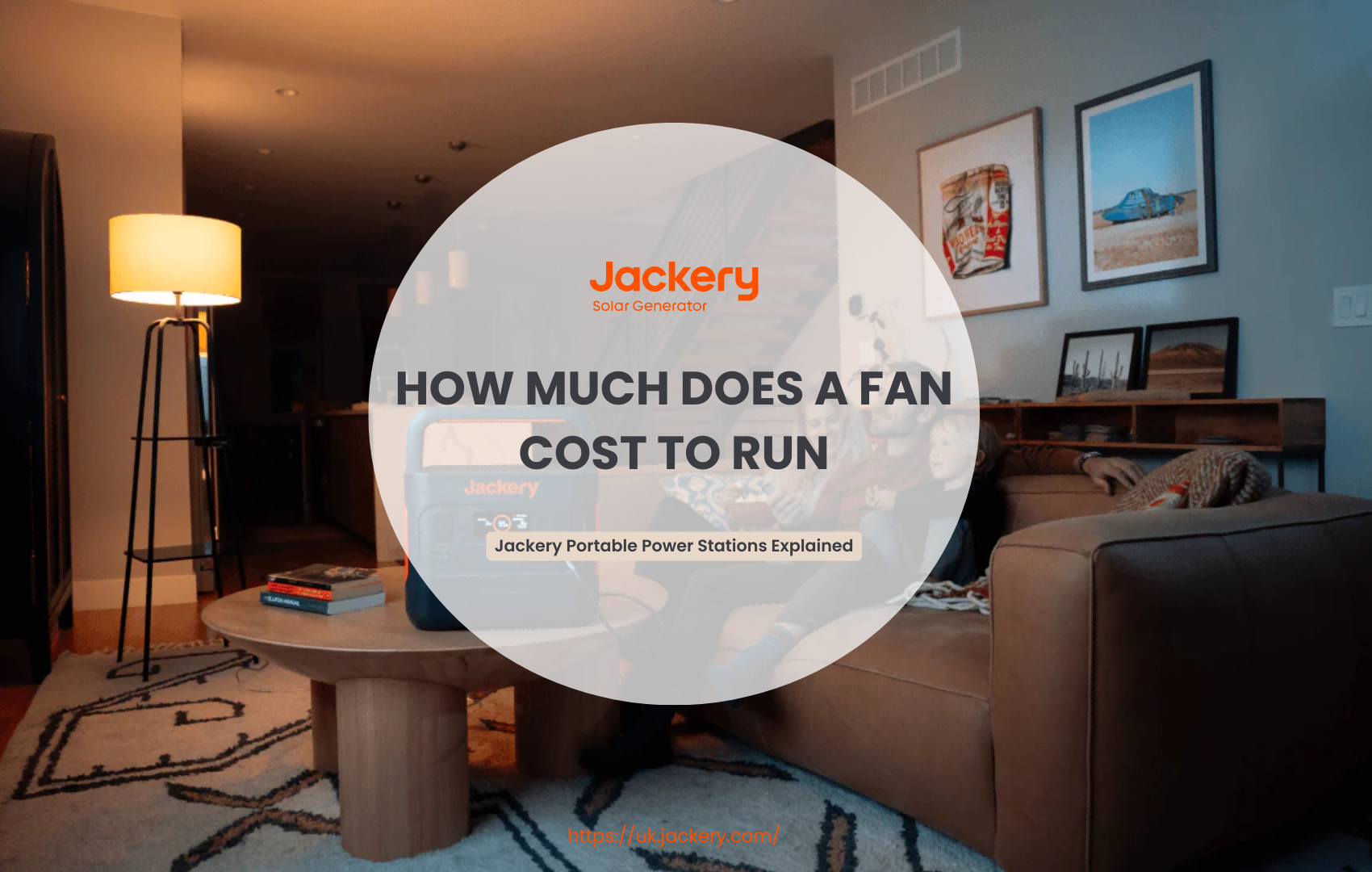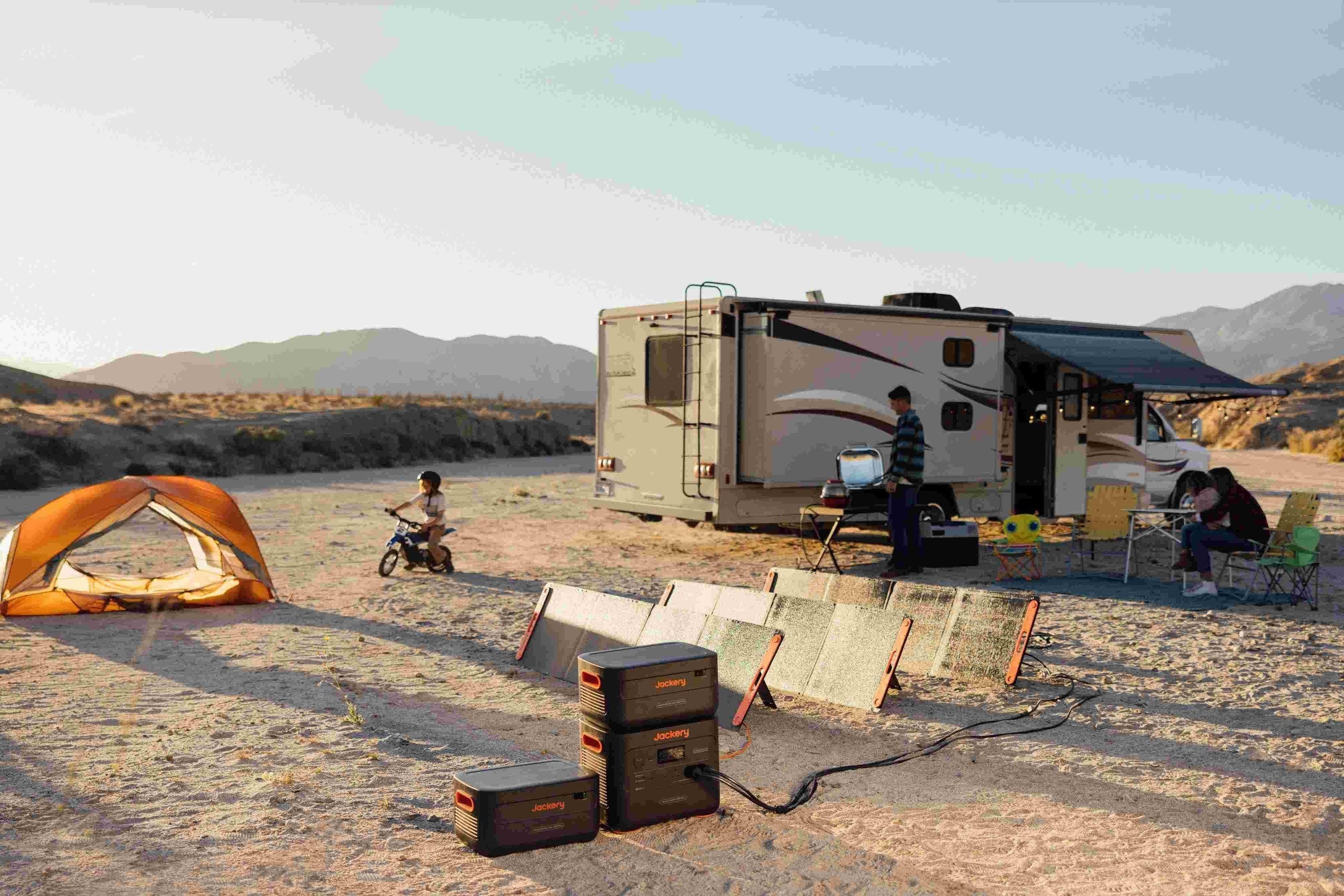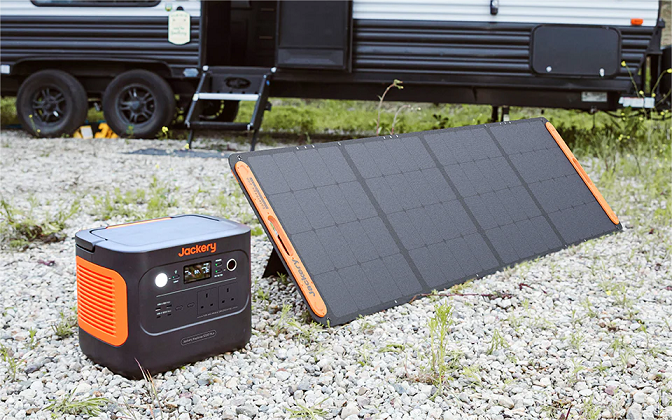Most people want to keep their homes cool during the hottest summer months while managing rising electricity bills. If you frequently use air conditioning to cool down, keeping your homes cool and managing rising electricity bills is impossible. Using a fan instead of an air conditioner is a good way to save money on electricity.
However, many people are still unclear about how much energy fans consume and how much electricity they cost. In this article, we will break down the running costs of fans and tips to reduce their running costs. Besides, we highly recommend Jackery Portable Power Station to power fans and other appliances to save electric bills in your home.
|
Key Takeaways: |
|
- Fans may not be necessary for most British people. However, fans still have particular practical value in specific circumstances. - Although the exact wattage used by fans varies from device to device, the average power is generally between 40 and 100 watts per hour. - The running cost of a 50W fan running 8 hours a day is about 9.944 pence. If the summer is calculated as 3 months (90 days), the running cost of the fan throughout the summer is £8.95. - We highly recommend Jackery Explorer 2000 Plus and 1000 Plus for power tumble dryers. These devices use solar energy to save money on your electric bill. |
Are Fans a Must for People in the UK?
Several factors must be considered when deciding whether fans are necessary for British people, including the country's climate, living conditions, and habits.
Climate Characteristics
The UK is mild and humid all year round and relatively calm in summer. Its average temperature is usually between 20 and 25°C, and high temperatures are rare. Residents have long been accustomed to this calm climate. Therefore, from a climatic perspective, the frequency of fan use in the UK may be much lower than in tropical or subtropical regions.
Living Conditions
Most residential and commercial buildings in the UK have good insulation designs to cope with the cold in winter. Therefore, in the summer, due to the low temperature, the design of the building itself is enough to keep the room cool.
However, for international students or immigrants from countries with hot climates, fans may be critical auxiliary equipment for their summer life in the UK.
Living Habits
Most British people prefer to keep rooms cool through natural ventilation, shading, etc. Their concern for energy efficiency and environmental impact may also make them more cautious when choosing cooling equipment. Therefore, fans may not be a necessity for many British people.
In short, fans may not be necessary for most British people. However, fans still have particular practical value in specific circumstances, such as hot summers or environments where air conditioning cannot be installed.
How Much Does a Fan Cost to Run?
Many consumers are concerned about the running costs of fans as a standard cooling device in summer. Although the initial investment of different types of fans varies greatly, their running costs are generally low and suitable for most families and students. The following will analyse fans' energy consumption and running costs.

Do Fans Consume a Lot of Electricity?
Fans do not usually consume a lot of electricity. Although the exact wattage used by fans varies from device to device, the average power is generally between 40 and 100 watts per hour.
A fan's energy consumption depends mainly on motor efficiency and operating speed. Some fans, such as box or oscillating fans, usually require higher power, primarily when used at high speeds.
If you want to know whether fans' power consumption is high compared to other common household appliances, please calculate it using the following steps.
Step 1: Find out the wattage of some common household appliances in British households.
Here are the wattages of some common appliances in British households:
|
Appliance Type |
Watts |
|
Fan |
40-100W |
|
Fridge |
150W |
|
Dehumidifier |
500W |
|
Microwave |
1000W |
|
Washing machine |
2100W |
|
Oven |
2100W |
|
Kettle |
3000W |
(Data Source: heatable.co.uk)
Step 2: Calculate the power consumption of the fan.
Generally, the wattage of fans is between 40 and 100 watts per hour. So, how much electricity does a 100W fan consume in one hour?
100W / 1000 = 0.1kW
0.1kW × 1hour =0.1kWh
Step 3: Calculate the power consumption of other common household appliances.
Example 1: How much power does a 150W fan consume in one hour?
150W / 1000 = 0.15kW
0.15kW × 1hour =0.15kWh
Example 2: How much power does a 3000W fan consume in one hour?
3000W / 1000 = 3kW
3kW × 1hour =3kWh
Based on the above, fans consume less power than other common appliances.
How Do You Calculate the Running Cost of a Fan?
If you want to estimate the exact running cost of a fan, you need to know the following three data.
• Fan power
• Fan run time
• Electricity price
First, you can confirm the fan's power, run time, and electricity consumption. The wattage should usually be shown on the fan or in the manual. Once you know the fan's wattage, convert it to kW. Then, according to the latest data from Ofgem, the average electricity price per kilowatt-hour in the UK is currently 24.86 pence (energy price cap).
Finally, multiply the fan's power by its running time and then the electricity price used to run it, which is the cost of running the fan.
Based on the above, you can calculate the approximate running cost of a 50W fan, assuming it runs for 8 hours a day.
50W / 1000 = 0.05kW
0.05kW × 8hour × 24.86p/kWh =9.944p
Then the running cost of a 50W fan running for 8 hours a day is about 9.944 pence. If the summer is calculated as 3 months (90 days), the running cost of the fan throughout the summer is 9.944 pence/day × 90 days = 894.96 pence ≈ 8.95 pounds.
What Is the Running Cost of Different Types of Fans?
The energy consumption of different types of fans is usually quite different. According to the above content (24.86 pence/hour), you can estimate their running costs after knowing the power of various types of fans.
|
Fan Type |
Wattage |
Hourly Running Cost |
Daily Running Cost (8 hours) |
|
Desk Fan |
20W-60W |
0.5-1.49p |
3.98-11.93p |
|
Stand Fan |
40W-100W |
0.99-2.49p |
7.96-19.89p |
|
Bladeless Tower Fan |
30W-80W |
0.75-1.99p |
5.97-15.91p |
|
Handheld Fan |
5W |
0.12p |
0.95p |
The data in the table may differ from the actual data and is for reference only.
Can I Leave the Fan on All Day?
The summer heat is unbearable, and electric fans have become a heat-avoiding tool for many families. However, can the fan be turned on all day? Doing so may have adverse effects. The following are possible disadvantages of turning the fan on all day.
Reduce the Service Life of the Fan
Generally speaking, after a fan with good performance and reliable quality runs continuously for about 24 hours, its temperature will reach a stable state and not burn out due to long-term use. However, long-term continuous operation will increase the equipment's loss and easily cause it to age, thus affecting the fan's service life.
Excessive Energy Consumption
After running long, the fan motor generates heat and increases energy consumption. Therefore, turning on the fan for a long time is not economical from an energy-saving perspective. If no one is in the room or continuous cooling is not required, it is best to turn off the fan to save electricity.
Causes a Decrease in Indoor Air Quality
Low-quality electric fans without an effective filtration system cannot purify the air. They are likely to blow dust, bacteria, pet dander, and other particles into the room, decreasing air quality. Being in this environment for a long time (especially for people with allergies) is prone to respiratory diseases.
Health Hazards
Fans accelerate air circulation and promote the evaporation of human sweat, which can calm people. However, long-term direct exposure to fans may have adverse effects on health.
Long-term use of fans may cause the following hazards to the human body:
• Cause physical discomforts such as dizziness and headaches
• Increase the risk of colds
• Cause joint pain
• Affect endocrine and body fluid secretion
What Factors Affect the Running Cost of a Fan?
As a common household appliance, the running cost of a fan is not only related to its initial purchase price but also closely related to its energy consumption and maintenance during long-term use. The following are the main factors that affect the running cost of a fan:

Fan Type and Efficiency
Different types of fans have different efficiencies, such as ceiling, floor, tower, bladeless, etc. Highly energy-efficient fans (rated Class A in energy efficiency) have lower energy consumption and running costs. In addition, the higher the fan's power, the greater the power consumption and the higher the running cost.
Frequency and Duration of Use
The longer the fan is used, the greater the power consumption and the higher the running cost. For example, summer is the peak season for fan use compared to winter, and its running cost is also higher.
Besides, many fans have multiple wind speeds and mode options, and the energy consumption in different modes differs. Using a high-power mode for a long time will result in higher running costs for the fan.
Operating Environment
In a high-temperature environment, the fan needs longer or higher power to achieve the desired cooling effect, which increases energy consumption. A well-insulated room can maintain a more stable indoor temperature and reduce the time and frequency of fan use.
Maintenance and Replacement
The cost of maintaining a fan mainly includes cleaning and replacing parts. Some well-designed fans are easy to disassemble and clean, which can reduce the difficulty and expense of maintenance. In addition, the life of key components such as the fan's bearings and motors will also affect the maintenance cost. For example, ball bearings have lower maintenance requirements and replacement costs than oil-containing bearings.
Tips for Improving Fan Efficiency and Reducing Running Costs
What methods can help you effectively improve the operating efficiency and reduce the running costs of fans without affecting essential use? Here are some practical tips:

Tip 1: Choose High-Efficiency and High-Quality Models
Please choose fans equipped with high-efficiency motors and new materials. Although their initial costs may be higher, high-efficiency and high-quality fan models are more efficient and have lower long-term running costs.
Tip 2: Reasonable Fan Placement
Placing a ceiling, floor, or table fan will significantly impact efficiency. For example, do not place a table fan behind a pile of files or books where the airflow is blocked.
Tip 3: Clean Regularly
After long-term use, dust and dandruff will most likely accumulate on the fan blades, affecting their working efficiency. Therefore, please regularly clean the fan blades and cover, which can reduce wind resistance, improve heat dissipation, and reduce energy consumption.
Tip 4: Turn Off the Power When Not in Use
Almost all fans consume energy even when they are on standby. Therefore, turn off the fan when not in use to save energy. In addition, you can set the fan's timer function according to your needs to automatically turn off the fan when you don't need it.
Tip 5: Use Auxiliary Cooling Measures
When conditions permit, use natural ventilation instead of fans. However, keep windows, curtains, or blinds closed during the day. (This can reduce unnecessary heat by about 30%.)
In addition, you can place an ice water bottle in front of the fan to blow cold air through it, improving the cooling effect.
Tip 6: Use Renewable Energy
Solar energy to drive fans can effectively reduce running costs and environmental impact compared with traditional grid-powered fans. Today, solar power generation systems are combined with energy storage systems to enhance power supply reliability and stability.
If There Is a Power Outage, How Do I Power the Fan?
Although power outages are uncommon in the UK, it is essential to have backup power when they occur. Here are a few backup power solutions that can power fans during a power outage:
Portable Generators
Portable generators usually use gasoline or propane as fuel and can provide enough power to run fans. When the power goes out, place the portable generator outdoors in a well-ventilated area, connect it to the room through an extension cord, and then connect it to the fan and other appliances.
After starting the generator, you can power the fan and ensure it runs stably.
In short, backup generators are suitable for scenarios where power supply stability is required and environmental factors are not considered.
Portable Power Stations
Portable power stations usually have built-in lithium-ion batteries and can be charged from wall sockets or solar panels.
Fully charge the portable power station in advance. When the power goes out, plug the fan into the power station's socket.
In short, portable power stations are suitable for short-term, low-power emergency power supply.
Solar Power System
Install a home solar power system and ensure it can be connected to the home grid. During a power outage, the system can automatically switch to off-grid mode to power essential appliances such as fans. In short, solar power systems are suitable for long-term, environmentally friendly and budget-sufficient users.
If you worry about the bad weather conditions in the UK, you can also recharge the power station at home with wall sockets, especially in off-peak times, which can save electric bills to some degree. Taking Jackery Portable Power Station and Jackery Solar Generator as an example, if you choose to use the solar generator to power your home appliances, you can save about 50.76 pence per day. If you use it for 10 days, you can save 5 pounds.

In short, the above three methods can provide backup power for fans during a power outage in the UK. Please consider the most suitable method based on your needs, budget, and environmental conditions.
At the same time, please be prepared for power outages by regularly checking backup power equipment and stocking up on enough charging equipment to cope with them.
|
|
Advantages |
Disadvantages |
|
Portable Generators |
Stable power supply Sufficient power Instant power supply |
Pollution High noise High maintenance cost |
|
Portable Power Station |
Portable and flexible Low noise Environmental protection and energy saving |
Limited power supply capacity Long charging time High initial investment |
|
Solar Power Generation System |
Clean and environmentally friendly Long-term economic benefits Low maintenance requirements |
Dependent on weather conditions Energy storage issues Large footprint |
Jackery Portable Power Stations Explained
A portable power station is necessary to run a fan during a power outage because it provides a backup source of electricity that lets you keep using your dryer even when the main power goes out. This is especially helpful in emergencies or places where power goes out often.
We recommend Jackery Portable Power Stations to charge your heating appliances and save on your electric bills. Jackery offers portable power solutions ranging from 99W to 12 kWh, capable of powering up to 99% of appliances, including tumble dryers, heat pumps, hair dryers, etc.
Also, the Jackery Portable Power Stations are compact and easy to carry so that you can put them everywhere in your home. Compared to gas or other traditional generators, they are safer to use, and you can even use them while sleeping.
|
Fans |
Working Hours |
|
|
Jackery Explorer 2000 Plus |
Jackery Explorer 1000 Plus |
|
|
Desk Fan (60W) |
27H |
14.3H |
|
Stand Fan (100W) |
16.3H |
8.6H |
|
Bladeless Tower Fan (80W) |
20.42H |
10.7H |
|
Handheld Fan (5W) |
362.72H |
171.2H |
|
Portable AC (700W) |
2.3H |
1.2H |
(*The working hours are only for reference; the actual working hours depend on your usage.)
Jackery Explorer 2000 v2
The Jackery Explorer Portable Power Station 2000 v2 has an astounding 2042Wh capacity and 2200W output, enough to power most household equipment. It also has two AC outlets, one USB-A 18W port, and two USB-C ports (100W + 30W), so you can charge several devices simultaneously, such as the box fan and portable AC.
The world's first 2kWh LiFePO4 power station, which features advanced EV-grade CTB (Cell to Body) Structure technology⁵, is engineered to be more compact and lightweight. It weighs a mere 38.6 lbs—approximately the same as a suitcase. It is the ideal power solution for off-grid living, camping, and road trips and features a foldable handle for effortless transport.
There are many ways to recharge it, including 2x SolarSaga 200W (5.5 hours), regular wall charging (1.7 hours), and car charging (24 hours). With Emergency Super Charge Mode, which can be activated through the Smart App, the power station can be charged from 0% to 80% in just 52 minutes with Emergency Super Charge Mode, which can be activated through the Smart App. This feature is ideal for situations where power is required urgently. A complete charge requires only 103 minutes in regular AC charging mode.

Review from Our User:
You can use this 2000-watt power anytime, anywhere on your premises. It can be charged via the solar panels or directly from the wall. This gives you mobile, sustainable power in any situation and is easy to use. Because it is compact and takes up very little room, its 2200 W output power can power your refrigerator, stove, air fryer, coffee machine, and more.
Jackery Explorer 1000 v2
We recommend Jackery Explorer 1000 v2 for powering fans. From its capacity to its design, it is suitable as a portable power supply to provide enough electricity for small to medium household appliances.
The Explorer 1000 v2 Portable Power Station has an excellent 1500W output and 1070Wh capacity, 50% higher than the Explorer 1000. It can power high-demand items like portable space heaters, kettles, etc. Equipped with USB-A/C connections and dual PD charging up to 100W, it can simultaneously charge several devices (phone, laptop), rendering it the ideal companion for all your power requirements.
The app's Emergency Charge Mode allows the Explorer 1000 v2 Portable Power Station to be fully charged in less than an hour, offering vital power backup when the battery runs low. Moreover, charging from 0% to 100% within two hours via an AC wall outlet prolongs battery longevity.
Experience serenity with its nearly silent operation, maintaining noise levels below 22dB while energising your devices. This power station guarantees uninterrupted enjoyment during camping, work, or relaxation so you can power your electric cookers and other electronics without noise.

Review from Our User:
We needed to upgrade to a more potent edition and had a Jackery. Since we already knew the quality was outstanding, this was a no-brainer. Yes, it is a touch heavy, but we need more power, and this version certainly provides it. The additional features of the light and a folding handle—two things we felt the others required, especially the handle—make it a great addition. We used it to charge phones and laptops and run the air fryer while away for the weekend. So far, no problems!
FAQs
The following are the frequently asked questions about the running costs of fans in the UK:
1. Will fans drive up your electricity bill?
Although running a fan all day will use electricity, it will use much less than running an air conditioner (for the same amount of time). Even if you leave a fan on for 24 hours (a typical household fan), its running costs (electricity bill) will likely be less than a pound.
2. Are some fans cheaper to run than others?
Generally, different types of fans are cheaper than others when used for extended periods.
Blade fans tend to use the most energy. Generally, the larger the blades, the more electricity is required to turn them. Tower fans typically use less power than blade fans.
3. Are there energy-saving features to consider when buying a fan?
If you are considering buying a fan with energy-saving features, look out for the following features:
• Fans with sleep timers can switch off after a preset time interval.
• Being able to change speed will help reduce the energy used by the fan.
4. Can fans make a room cooler?
Generally, fans cannot cool a room. Moving air lowers people's body temperature, making them feel calmer. Therefore, fans have little effect on the temperature and heat in a room.
You won't need to turn on the fan if you don't plan to be in the room.
Final Thoughts
When summer temperatures rise, finding an efficient cooling solution is essential to keep your home comfortable and avoid a stuffy environment. Compared to other home appliances such as air conditioners, fans become one of the most cost-effective ways to cool down. This article estimates how much you can expect to run a fan per hour. However, the running cost of a fan is affected by many factors, including energy consumption, operating environment, and maintenance costs.



